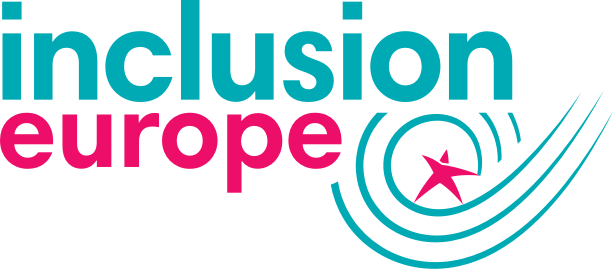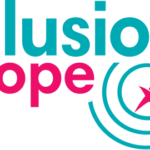What are the European Funds and how are they used?
EU Funds are used to support projects of public utility, beneficial for all. Around 80 billion euros are assigned each year in all kinds of projects to private, public and non-profit organisations. With the COVID-19 crisis and thanks to the Recovery Plan, the amount allocated for the next period is larger than usual. The European Parliament called for EU funds to be accessible, promote accessibility and deinstitutionalisation. Funded projects must respect accessibility rules.
Types of EU Funds
- Grants: when a project receives a grant, it will be co-financed between the EU and the beneficiary organisation.
- Loans, guarantees and equity: in this case, the financing goes through local financial institutions (banks, guarantee societies or equity investors), who will determine the financing conditions.
- Subsidies: they are managed directly by EU national governments.
- Prizes: rewards to winners of contests from Horizon 2020 (which finances research projects).
Management
- Direct management: the European Commission manages the budget directly if the projects are carried out by its departments, at its headquarters, in the EU delegations or through EU executive agencies.
- Indirect management: in the case of projects carried out by non-EU countries, international organisations, development agencies and other bodies, the Commission will not manage the budget.
- Shared management: the Commission delegates the management of certain programmes to EU countries. Member States will prepare the agreement and set out how the funds will be used during a funding period (usually a multiannual financing framework). This is the most common type of management.
Who can benefit from those?
- Small and medium-sized enterprises
- Non-profit or non-governmental organisations
- Young people
- Researchers
- Farmers
- Public bodies
- Others
Benefit from those funds
- Find an opportunity: visit the European Commission list of projects by topic or the overview, identify a relevant call for proposals, and follow the specific guidelines on how to apply.
- Find a partner: many projects are collaborative with organisations from other EU countries or associated countries. There are partner search services
- Follow the application process: make sure to prepare the proposal by following the guidelines, criteria and requirements set out by the call you apply for.
- Eligibility and admissibility: there are eligibility and admissibility criteria to follow, which is in the call for proposals guidelines. The application submitted electronically and on time, be complete and concise.
- Evaluation: each proposal will be analysed.
- Signing the agreement and receiving the grant: when the proposal is accepted, a grant agreement must be signed.
- Managing the project: when you receive a grant, the project has to be managed carefully until completion; the Commission can provide templates and deadlines to follow.
COVID-19 Recovery Plan
Following the Covid-19 pandemic, to protect individuals and save the economy, EU leaders agreed in July 2020 on a package of €1,824.3 billion:
| Multiannual financial framework
(MFF) |
+ | Next Generation EU |
| €1,074.3 billion | extra €750 billion recovery effort |
The Multiannual Financial Framework is the ‘traditional’ budget, and the Next Generation EU is an additional package to respond to the Covid-19 crisis, increasing the funds available for EU programmes.
They also agreed on three thematic special instruments to provide additional financial means for specific unforeseen events:
- the Brexit Adjustment Reserve,
- the European Globalisation Adjustment Fund,
- the Solidarity and Emergency Aid Reserve (SEAR).
The plan was adopted by the EU institutions, and it will be fully enforceable after ratification from every Member State.
Technicalities: how does the Recovery Plan work?
All Member States are engaging this debt together, and they will have to pay it until 2058. Member States have to send their National Plans explaining what they are going to do. But there are specific recommendations for each country which must be followed.
The Plans will be evaluated by the Commission, and then voted by the other Member States, and will need to receive the positive vote of at least 15 Member States that represent 65% of the EU population. Member States have until 2023 to send their plans, and the funds can be given until 2026.
Flexibility is a keyword. EU leaders agreed on a Single Margin Instrument (SMI) to allow the financing of specific unforeseen expenditure in commitments and corresponding payments that could not be financed otherwise. The SMI annual ceiling, which is the maximum amount that can be financed each year, will be set at €772 million (2018 prices).
3 pillars of the Next Generation EU
- Supporting the Member States to recover,
- Kick-starting the economy and helping private investment,
- Learning the lessons from the crisis.[1]
The amounts available under the Next Generation EU will be allocated to seven individual programmes.[2]
Recovery and Resilience Facility (RRF)
This programme represents close to 90% of the total envelope of the NGEU. Member States shall prepare national recovery and resilience plans for the years 2021-2023. The review of the plans will be done following the country-specific recommendations of the European Semester.[3]
Each plan should contribute to the 2021 Annual Sustainable Growth Strategy:
- Environmental sustainability
- Productivity
- Fairness
- Macroeconomic stability
The Commission will also assess the plans according to two minimums to be included in each recovery and resilience plans:
- Minimum of 37% of expenditure related to climate,
- Minimum of 20% of expenditure to foster the digital transition.[4]
ReactEU
REACT-EU stands for Recovery Assistance for Cohesion and the Territories of Europe. It will contribute to a green, digital and resilient recovery of the economy.
The REACT-EU package includes €55 billion of additional funds that will be made available to the 2014-2020: [5]
- European Regional Development Fund (ERDF) – this instrument aims to strengthen economic and social cohesion in the Union by correcting imbalances between regions.[6]
- the European Social Fund (ESF) – Europe’s main instrument for supporting jobs and ensuring fair job opportunities. 20% of the investments shall be committed to the promotion of social inclusion and to combat poverty.
- the European Fund for Aid to the Most Deprived (FEAD) – supports Member States actions to provide material assistance to the most deprived and social inclusion measures.
These programmes are not new, but part of the long-term budget of the EU; ReactEU will increase the funds available and the conditions more flexible.
RescEU
As an additional safety net, the European Commission created a strategic medical stockpile and distribution mechanism. The stockpile enables the swift delivery of medical equipment such as ventilators, personal protective equipment, vaccines and therapeutics and laboratory supplies.[7]
[1] https://ec.europa.eu/info/live-work-travel-eu/health/coronavirus-response/recovery-plan-europe/pillars-next-generation-eu_en
[2] https://www.consilium.europa.eu/en/meetings/european-council/2020/07/17-21/
[3] https://ec.europa.eu/info/publications/2020-european-semester-country-specific-recommendations-commission-recommendations_en
[4] https://ec.europa.eu/info/business-economy-euro/recovery-coronavirus/recovery-and-resilience-facility_en
[5] https://ec.europa.eu/commission/presscorner/detail/en/QANDA_20_948
[6] https://ec.europa.eu/regional_policy/en/funding/erdf/
[7] https://ec.europa.eu/echo/what/civil-protection/resceu_en
The Multiannual Financial Framework is the long-term EU budget. It determines the amount allocated to EU priorities and limitations.[1]
The 2021-2027 MFF is made up of an extraordinary amount of money in comparison to previous years.[2]
Cohesion policy measures
The Commission launched in April 2020 two packages of measures, in addition to the ReactEU:
Coronavirus Response Investment Initiative (CRII)
The first package of measures concentrated on the immediate mobilisation of structural funds – which are funds destined to reduce regional inequalities in the EU – to allow a prompt response. CRII can be used to emergency funding needs of social services due to COVID-19, and access to these funds is immediate.[3]
Coronavirus Response Investment Initiative Plus (CRII+)
This package introduces extraordinary flexibility to allow that all non-utilised funds from the European Structural and Investment Funds to be mobilised to their fullest, with:
- Unlimited transfer possibilities across the three ReactEU funds;[4]
- Transfers between the different categories of regions, which are divided according to their development level;
- Flexibility when it comes to focusing investment on specific objectives;
- 100% EU co-financing rate for cohesion programmes in 2020-2021, so Member States can have total EU financing to respond to the crisis.
The CRII+ package also simplifies procedural steps linked to programme implementation, use of financial instruments and audit.[5]
The European Social Fund+
The European Social Fund+ aims to merge:[6]
- the European Social Fund (ESF),
- the Fund for European Aid to the most Deprived (FEAD),
- the Youth Employment Initiative (YEI) – supports young people who are not in education, employment or training.[7] The new proposal reinforces the Youth Guarantee and reaches out to vulnerable young people across the EU, aged from 15 to 29,[8]
- the Employment and Social Innovation Programme (EaSI) – aimed to promote a high level of “quality and sustainable employment”, with adequate and decent social protection, combating social exclusion and poverty, and ameliorating working conditions,
- the EU Health Programme.
While this new programme is still in process, it will help build a more social Europe by supporting the implementation of the European Pillar of Social Rights and of the priorities of the European Semester. The European Parliament suggested a high earmark for social inclusion expenditure, where the Member States would have to spend at least 25% of the funds on social inclusion.[9]
The Covid-19 crisis has affected the ESF+ not only by delaying its adoption, but it may also result in more flexible conditions than expected.[10]
The Rights and Values Programme
Based on a proposal from 2018, it brings together: [11]
- Rights, Equality and Citizenship (REC) Programme
- Europe for Citizens Programme.
With the new Recovery Plan, available funds for this programme are lower than in the previous period. [12]
The previous REC Programme had as one of its priorities the promotion of the active inclusion and participation of people with disabilities in society and the support active stakeholders in the implementation of the Convention on the Rights of People with Disabilities (CRPD).[13]
[1] https://www.consilium.europa.eu/en/policies/the-eu-budget/negotiating-the-long-term-eu-budget/
[2] https://ec.europa.eu/info/strategy/eu-budget/long-term-eu-budget/2021-2027_en
[3] https://www.easpd.eu/en/content/european-commission-promotes-dialogue-social-services-covid-19-recovery
[4] https://ec.europa.eu/commission/presscorner/detail/en/qanda_20_574
[5] https://ec.europa.eu/commission/presscorner/detail/en/qanda_20_574
[6] https://www.europarl.europa.eu/legislative-train/theme-new-boost-for-jobs-growth-and-investment/file-mff-esf
[7] https://ec.europa.eu/social/main.jsp?catId=1176
[8] https://ec.europa.eu/info/strategy/priorities-2019-2024/economy-works-people/youth-employment-support-bridge-jobs-next-generation_en
[9] https://eur-lex.europa.eu/legal-content/en/TXT/?uri=CELEX:52018PC0382
[10] Eurocities, Policy brief on the ESF+ for 2021-2027, https://www.google.com/url?sa=t&rct=j&q=&esrc=s&source=web&cd=&cad=rja&uact=8&ved=2ahUKEwiOx8eEkZnuAhXbiVwKHVxiDQYQFjAAegQIAxAC&url=http%3A%2F%2Fnws.eurocities.eu%2FMediaShell%2Fmedia%2FPolicy_brief_on_the_ESF_.pdf&usg=AOvVaw1j2vVDqedvVTgJjlm7quS4
[11] https://www.consilium.europa.eu/media/45109/210720-euco-final-conclusions-en.pdf
[12] https://www.europarl.europa.eu/legislative-train/theme-a-new-push-for-european-democracy/file-mff-rights-and-values-programme
[13] https://ec.europa.eu/info/funding-tenders/opportunities/portal/screen/programmes/rec
In addition to those programmes, the Commission developed the SURE initiative as an emergency aid. It is a new instrument that will provide up to €100 billion in loans to countries that need it to ensure that workers receive an income and businesses keep their staff.[1] The loans are to be directed to where they are most urgently needed, particularly in the countries most affected by the Covid-19 crisis.
[1] https://ec.europa.eu/commission/presscorner/detail/en/IP_20_582





